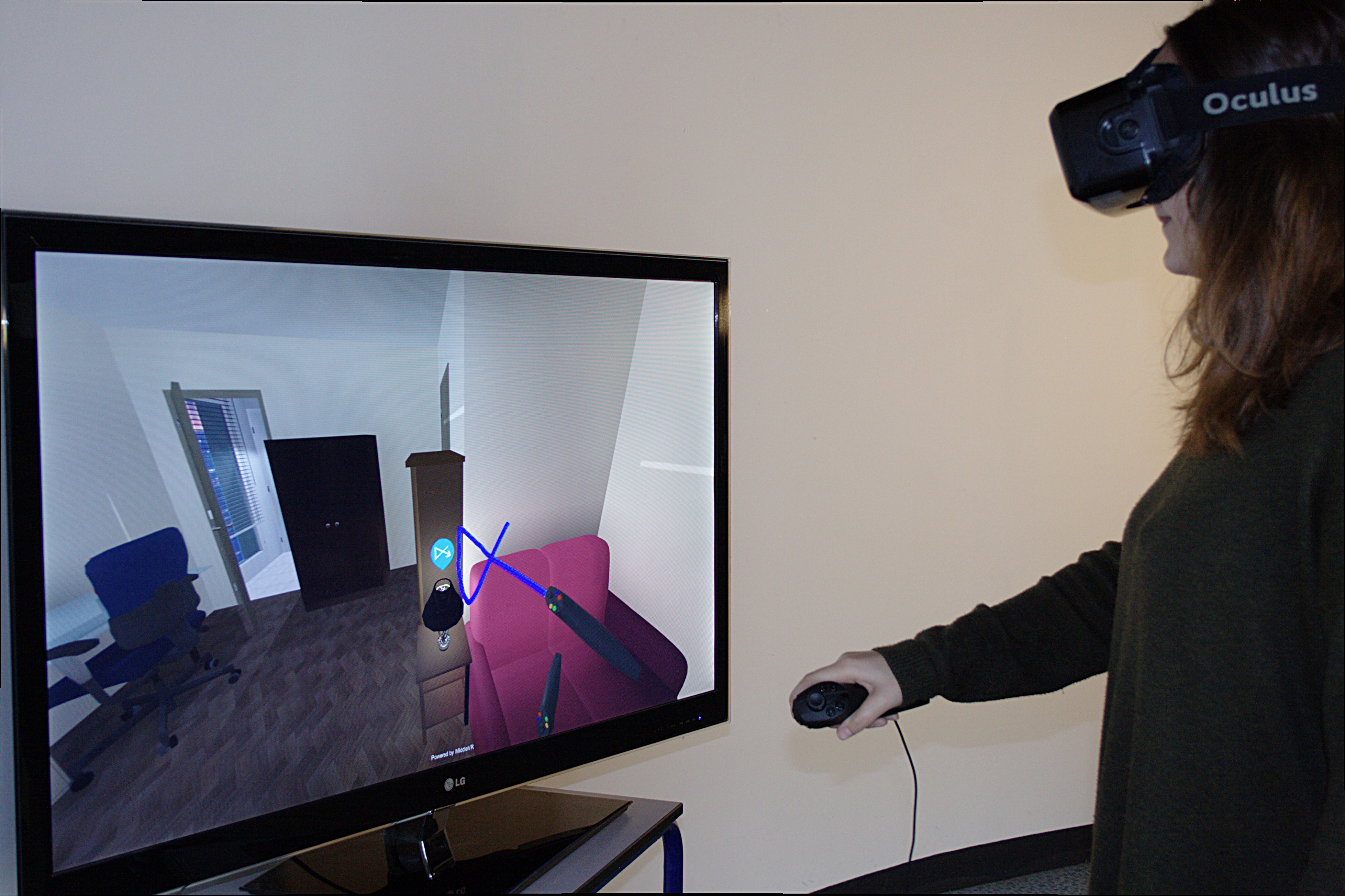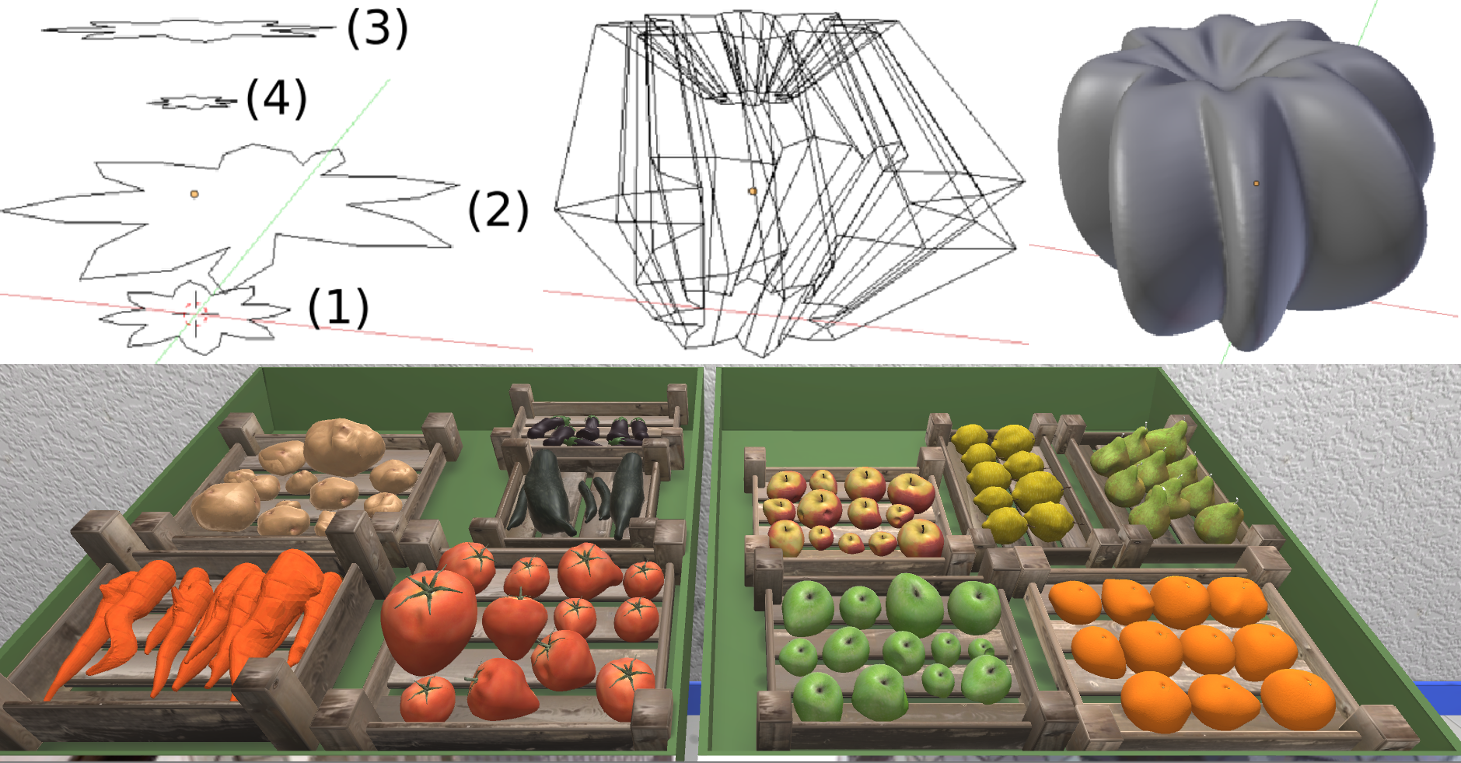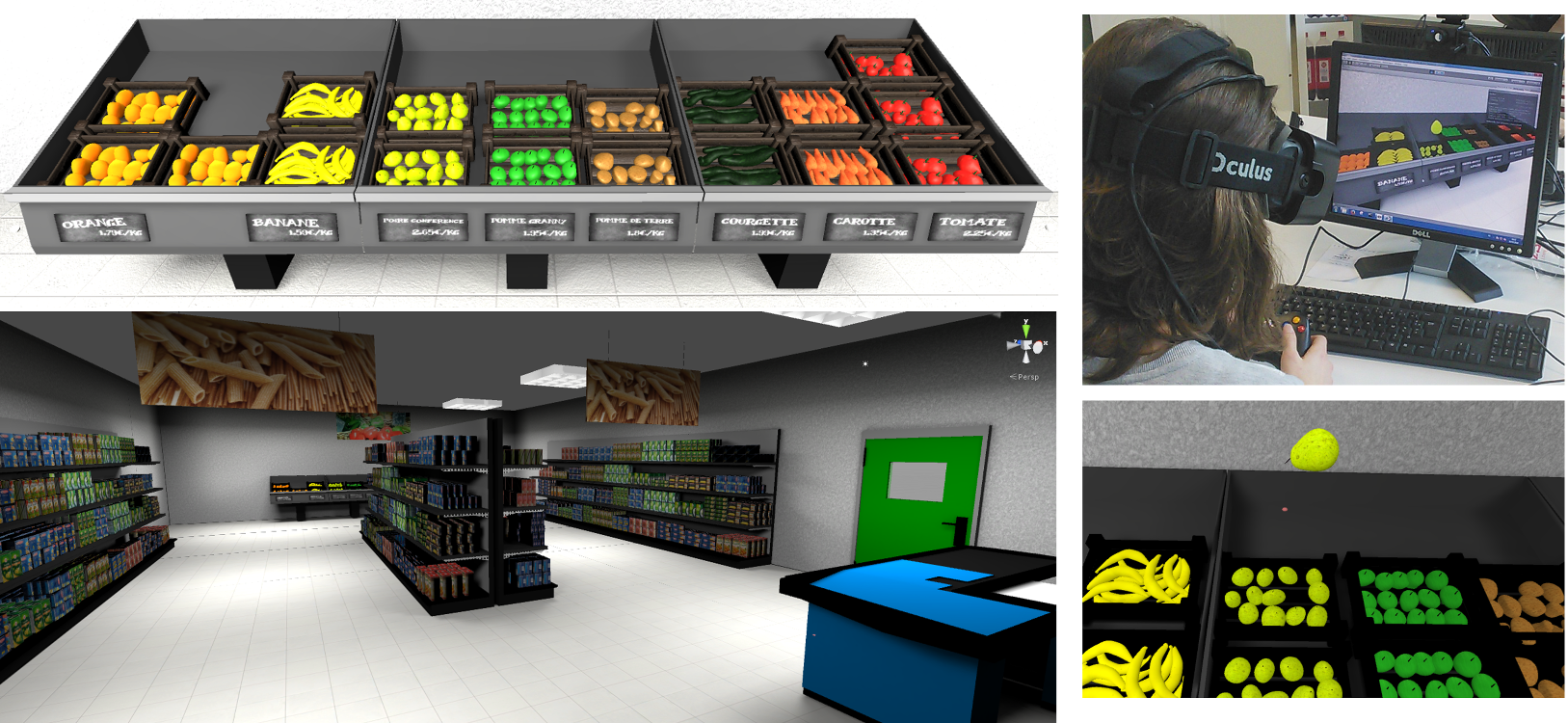Section: New Results
Virtual Reality Tools and Usages
Gesture recognition for VR
Spatial and Rotation Invariant 3D Gesture Recognition Based on Sparse Representation
Participants: Ferran Argelaguet and Anatole Lécuyer
Advances in motion tracking technology, especially for commodity hardware, still require robust 3D gesture recognition in order to fully exploit the benefits of natural user interfaces. In this work [11], we introduced a novel 3D gesture recognition algorithm based on the sparse representation of 3D human motion. The sparse representation of human motion provides a set of features that can be used to efficiently classify gestures in real-time. Compared to existing gesture recognition systems, the proposed approach enables full spatial and rotation invariance and provides high tolerance to noise. Moreover, the proposed classification scheme takes into account the inter-user variability which increases gesture classification accuracy in user-independent scenarios. We validated our approach with existing motion databases for gestural interaction and performed a user evaluation with naive subjects to show its robustness to arbitrarily defined gestures. The results showed that our classification scheme has high classification accuracy for user-independent scenarios even with users who have different handedness. We believe that sparse representation of human motion will pave the way for a new generation of 3D gesture recognition systems in order to fully open the potential of natural user interfaces.
This work was done in collaboration with PANAMA team.
Automatic tools for the evaluation of VR systems
AGENT: Automatic Generation of Experimental Protocol Runtime
Participants: Gwendal Le Moulec, Ferran Argelaguet, Valérie Gouranton and Bruno Arnaldi
Due to the nature of Virtual Reality (VR) research, conducting experiments in order to validate the researchers' hypotheses is a must. However, the development of such experiments is a tedious and time-consuming task. We proposed in [19] to make this task easier, more intuitive and faster with a method able to describe and generate the most tedious components of VR experiments. The main objective is to let experiment designers focus on their core tasks: designing, conducting, and reporting experiments. To that end, we propose the use of Domain-Specific Languages (DSLs) to ease the description and generation of VR experiments. An analysis of published VR experiments is used to identify the main properties that characterize VR experiments. This allowed us to design AGENT (Automatic Generation of ExperimeNtal proTocols), a DSL for specifying and generating experimental protocol runtimes. AGENT allows experiment designers to design an Experimental Conditions Model (see Figure 3-left) and a Protocol Model (see Figure 3-right) in the AGENT editor. The models are then automatically compiled into code that can be integrated into VR development tools, e.g. Unity. We demonstrated the feasibility of our approach by using AGENT within two experiments.
|
This work was done in collaboration with DIVERSE team.
Customer behavior and analyses in VR
The use of immersive Virtual Reality to investigate consumer perceptions and purchase behavior toward non-standard fruits and vegetables
Participants: Jean-Marie Normand and Guillaume Moreau
With the growth of organic Fruits and Vegetables (FaVs) markets, there is now a trend in marketing research toward studies of non-standardized fruits and vegetables in stores. Yet, because of the decaying nature of FaVs, it is difficult to conduct such studies. A solution is to conduct them within a Virtual Environment (VE) (with virtual FaVs). Therefore, it is of interest to develop an approach to generate a large variety and variability of FaVs, so one can later use them in a VE. First, we introduced a pipeline to generate a large variability of FaVs, focusing both on their shape and on their external appearance [30]. Regarding the shape, we use a semi-automated approach. A parametric Skeletal Structure and Generalized Cylinders (GCs) generates their overall shape and metaball-based techniques give them an organic aspect. Regarding their external appearance, we use a particle system approach to simulate their modifications over time. This particle system-based approach decomposes FaVs appearance changes into distinct visual characteristics producing different texture maps that can be combined.
|
Second, we conducted an immersive virtual reality user study aimed at investigating how customers perceive and if they would purchase non standard (i.e. misshaped) fruits and vegetables (FaVs) in supermarkets and hypermarkets [24]. Indeed, food waste is a major issue for the retail sector and a recent trend is to reduce it by selling non-standard goods. An important question for retailers relates to the FaVs' " level of abnormality " that consumers would agree to buy. However, this question cannot be tackled using " classical " marketing techniques that perform user studies within real shops since fresh produce such as FaVs tend to rot rapidly preventing studies to be repeatable or to be run for a long time. In order to overcome those limitations, we created a virtual grocery store with a fresh FaVs section where 142 participants were immersed using an Oculus Rift DK2 HMD. Participants were presented either “normal”, “slightly misshaped”, “misshaped” or “severely misshaped” FaVs. Results show that participants tend to purchase a similar number of FaVs whatever their deformity. Nevertheless participants' perceptions of the quality of the FaV depend on the level of abnormality.
|
This work was done in collaboration with Audencia Business School, Nantes, France.






